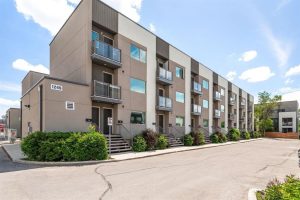Winnipeg is the most affordable major housing market in Canada. According to Wendell Cox’s 2024 International Housing Affordability report, the average price of a 1,500-square-foot home in Winnipeg is $310,000, compared with $1.1 million in Toronto and $1.4 million in Vancouver.
Don’t worry: Winnipeg planners have a plan to bring Winnipeg housing prices up to Toronto if not Vancouver levels. It’s called the 20-50 plan and it calls for adopting all of the land-use policies that have made Vancouver a mecca for anyone who can afford to spend well over a million dollars on a home.
The web pages describing the plan are full of innocuous statements such as having a “quality of life [that] is second to none in the world,” “being good stewards in our land and water,” and “strong collaborative relationships between all levels of government.” A look at the plan itself reveals that “quality of life” means transit, walking, and cycling, rather than driving; “good stewards of the land” means compact development rather than low-density housing; and “collaborative relationships” means an unelected regional government sets targets that local municipalities will have to follow.
Page 57 of the plan calls for putting most new development in “the metro Core, inner metro Area, and Regional Centres.” As shown on page 48, this would be done by zoning these areas using minimum-density zoning to force landowners and developers to build higher-density developments than currently exist in most of the region. Transit-oriented developments would have a minimum of 40 units per acre and other “higher density intensification sites” would have a minimum of 35 units per acre.

A condominium in this building is currently for sale in Winnipeg for $219,900. It has 1,185 square feet, no yard, and $2,467 in annual property taxes. It also has $449 a month in HOA fees, which at 4 percent interest adds the equivalent of $135,000 to the cost of the home.
The plan makes no attempt to estimate or even consider the impact of these policies on housing prices. Just as an example, the condo above and home below are currently for sale in Winnipeg. While they are both selling for about the same price, the home is 30 percent larger and does not come with an obligation to pay nearly $450 a month in “maintenance fees,” effectively making the condo almost 40 percent more expensive than the single-family home. The 20-50 plan effectively calls for more condos and fewer single-family homes.

This single-family home is currently for sale in Winnipeg for $219,000. It has 1,530 square feet, its own private yard, $2,263 in annual property taxes, and no HOA fees.
The plan also puts a great deal of emphasis on “active transportation” (walking and cycling) and transit with very little emphasis on roads. Anyone who has spent a winter’s day in Winnipeg knows that the climate is not friendly to walking and cycling much of the year.
An important part of the plan calls for “multi-modal transportation choice.” Where in North America is there a viable multi-modal transportation program? Toronto? New York City? Both are dominated by automobiles and require huge and unsustainable subsidies for their public transit systems. Neither resemble Winnipeg in any way so even to the extent that the offer multi-modal choices, their experiences do not map onto Winnipeg at all.
The plan says the region must impose more compact development on Winnipeg “to protect agricultural lands, agricultural operations, resource-related uses, and natural assets.” For the record, Manitoba is almost as big as Texas and much bigger than any other state other than Alaska, yet it has fewer than 1.5 million people for a population density of about 6 people per square mile. They don’t need to worry about urban sprawl paving over the province.
As for farm lands, the province has more than 17 million acres of farms, an amount that has declined a little recently not due to sprawl but because farmers stopped tending some marginal areas. The Winnipeg metro area, meanwhile, is 1.3 million acres, and is no threat to overall farm productivity.
It is easy for people who already live in single-family homes and travel by car to imagine that other people should live in small apartments and take transit everywhere. But what right do people have to impose substandard housing and obsolete transportation on other people?
Substitute the word “Vancouver” for “Winnipeg” and this plan looks a lot like the first regional plans written for the Vancouver metro area. In fact, there really isn’t anything about this plan that responds to Winnipeg’s special characteristics or needs. It is a one-size fits all Smart Growth plan that calls for denser development regardless of whether such development is desired by residents or economically efficient.
The agency writing this plan is holding a meeting this Thursday to accept public comments on the plan. Winnipeggers attending this meeting should oppose any kind of regional plan and demand that local governments take public preferences for single-family homes and driving into account when writing their zoning and transportation plans.
Randal O’Toole is a transportation policy analyst and author of Building 21st Century Transit Systems for Canadian Cities. (20 pages) March 12,2024.



